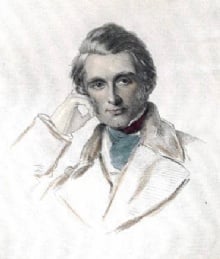Overview
John Ruskin’s 1843 Modern Painters (Volume I), published anonymously by "A Graduate of Oxford", sets out to overturn entrenched academic taste in landscape art. It argues that the best modern painters, above all J. M. W. Turner, surpass the revered Old Masters in their fidelity to nature and in the moral seriousness of their vision. The book is at once a polemic, a detailed study of natural appearances, and a manifesto for a new standard in criticism based on direct observation rather than inherited authority.
Core Argument: Truth to Nature
Ruskin’s governing principle is "truth to nature". He insists that great art arises from accurate, reverent attention to the facts of the created world, light, atmosphere, weather, geological form, growth, and motion. Fidelity does not mean mechanical copying; it means grasping essential relations and characteristic effects. The artist’s task is to perceive the largest, most vital truths in nature and render them convincingly, instead of relying on studio conventions or generalized formulas.
Turner and the Old Masters
The book mounts a sustained defense of Turner, then criticized for bold color and dissolving forms. Ruskin argues that Turner’s seemingly audacious effects are not caprice but the result of more scrupulous observation than that of earlier landscape painters. By contrast, he charges painters such as Claude Lorrain, Salvator Rosa, and Gaspar Poussin with picturesque mannerism, trees that behave like patterns, rocks without geological character, skies that ignore meteorological law. Where the Old Masters offer a pleasing compilation of accepted beauties, Turner presents living nature: transient light, storm-bursts, vapor, and the vast scale of the elements.
Natural Facts: Skies, Water, Earth, Vegetation, Mountains
Much of the volume is a close reading of specific landscape elements. Skies and clouds are treated as the great sources of tone and unity in a picture; their forms and gradations follow laws of perspective and meteorology that many painters neglect. Water must be rendered with attention to reflection, refraction, and motion, the ripple, wave, and current each having distinct character that can be tested against rivers and seas. The earth’s surfaces, from soil to crag, require geological truth: the fracture of rock, bedding, and weathering. Vegetation must show botanical structure, the way leaves mass, branch, and catch light, rather than the decorative scallops common in formulaic foliage. Mountains are to be represented with scale and stratification, not as stage scenery. Throughout, Ruskin bids readers verify his claims outdoors, treating nature as the ultimate tribunal.
Moral Vision and the Role of the Artist
For Ruskin, truth to nature has ethical and spiritual weight. Nature is the handiwork of God; to observe it honestly is an act of reverence, and to falsify it is a moral error as well as an artistic one. He links artistic greatness to humility, patience, and love of truth, arguing that noble art springs from a noble character. The most elevated landscape art, therefore, is not escapist decoration but a form of moral teaching, awakening the viewer to the world’s order and sublimity.
Style, Method, and Reception
The prose combines passionate advocacy with empirical rigor. Ruskin writes as both critic and field naturalist, blending aesthetic judgment with the language of science to test pictures against observable fact. The volume’s immediate aim is corrective, tackling connoisseurship that prizes studio lineage over the witness of the eye. Its broader contribution is a new critical method: go to nature, learn her laws, and judge art by its truth, power, and sincerity. Modern Painters thus inaugurates a revaluation of landscape painting, placing Turner at the summit and reshaping Victorian standards for seeing, painting, and judging the natural world.
Modern Painters
Modern Painters is a five-volume work by famous Victorian art critic John Ruskin. It is a comprehensive study of modern European painting, particularly focusing on the works of J. M. W. Turner. Ruskin discusses the principles of art, its origins, and the talents of the greatest painters.
Author: John Ruskin
 John Ruskin, a major English writer and art critic renowned for his socio-political critiques and impact on 19th-century society.
John Ruskin, a major English writer and art critic renowned for his socio-political critiques and impact on 19th-century society.
More about John Ruskin
 John Ruskin, a major English writer and art critic renowned for his socio-political critiques and impact on 19th-century society.
John Ruskin, a major English writer and art critic renowned for his socio-political critiques and impact on 19th-century society.